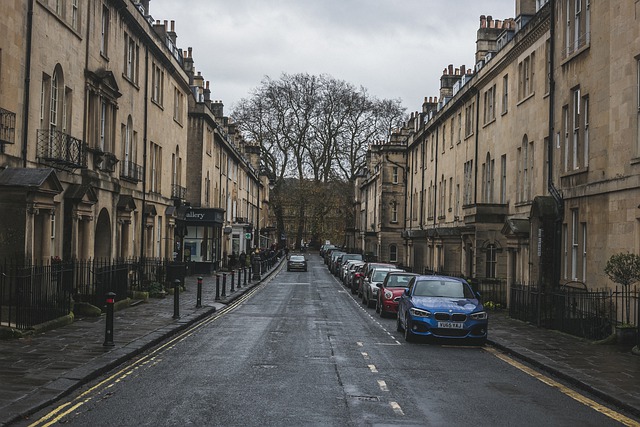 Grab your placards and fire up your Twitter account, there’s a new controversy brewing on the UK’s streets. To tackle road traffic, some London boroughs are limiting access to motor vehicles, and other cities plan to follow suit.
Grab your placards and fire up your Twitter account, there’s a new controversy brewing on the UK’s streets. To tackle road traffic, some London boroughs are limiting access to motor vehicles, and other cities plan to follow suit.
Needless to say, these plans have their supporters and detractors. The battle lines have already been drawn, with each side firmly committed to dimissing the other’s point of view.
In this two-parter, we’ll be looking at the thorny issue of vehicle access, focusing on so-called Low Traffic Neighbourhoods.
As usual, we’ll try to be all high-minded and neutral about it — a tough gig in these polarised times.
So, what’s the fuss about this time?
Let’s back up a bit. For some time, the UK Government has had measures in place to reduce the use of private motorised transport. However, these got something of a reboot in Spring 2020, when there was a need to keep people off public transport.
The Government’s policy fitted together with local initiatives and changes, to be rolled out in urban areas across the UK. These included:
- Temporary Covid-related measures for wider pavements, pop-up bike lanes, trials for rental e-scooters and more.
- Increased numbers of protected cycle tracks
- Statutory guidance telling councils to reallocate roadspace to allow for more pedestrians and cyclists.
- Timed road closures outside schools.
- The creation of low traffic neighbourhoods.
Out of these, the most radical measures are the low traffic neighbourhood (LTN) initiatives. In practice, a typical LTN scheme would keep through traffic off side streets, particularly those in residential areas. This is achieved either by physically blocking access with bollards, or by using numberplate recognition technology and issuing fines when needed. LTNs don’t block access for residents, but often they have to take convoluted routes to get home.
For any government that wants to be re-elected, making life more difficult for your urban voters and potentially alienating car owners is extremely risky. But the Government has some big traffic-related problems to tackle, and LTNs could be part of the solution.
Can Low Traffic Neighbourhoods help solve the traffic crisis?
 A few weeks back, we put our special nerd hats on and looked at the traffic statistics for the UK. It was pretty shocking to see just how much our traffic has increased. Although traffic has increased everywhere, one of the worst hit zones is residential streets. According to The Guardian, residential street traffic in London has increased by a walloping 70% over the last decade or so. The reasons aren’t hard to guess: increased car ownership, the rise of Uber, online delivery services and so on.
A few weeks back, we put our special nerd hats on and looked at the traffic statistics for the UK. It was pretty shocking to see just how much our traffic has increased. Although traffic has increased everywhere, one of the worst hit zones is residential streets. According to The Guardian, residential street traffic in London has increased by a walloping 70% over the last decade or so. The reasons aren’t hard to guess: increased car ownership, the rise of Uber, online delivery services and so on.
All of this traffic comes with a big price tag.
For anyone who lives or works in a city, the problems are obvious. Journeys are taking longer, with traffic slowing to a crawl or even gridlock at peak hours. Cyclists and pedestrians have to negotiate car-dominated streets. Residents live with the background noise from car engines, horns, music and so on.
Less visible, but more serious, is the impact of road traffic on health. Twenty years ago, we knew air pollution was bad, but we didn’t know quite how bad. Since then, a slew of scientific studies have shown just what huge effects airborne pollutants have on lifespan (and healthspan). One estimate is that across Europe, excess air pollution has led to 400,000 premature deaths over the past decade. Of course, road traffic isn’t the only source of these airborne nasties, but it is a major contributor.
Confronted by this information, governments can’t sit back and do nothing. They are obliged to start improving air quality, and one obvious way of doing that is from stopping cars going past our homes.
Layered on top of that are government iniatives to tackle climate change: another thorny issue, to be sure, but two-thirds of us now want the UK to lead the way on tackling climate change. Achieving that is going to take some big changes, and the Government see LTNs as part of the solution.
These are all logical reasons for creating LTNs, but we think that for some people, they have a more emotional appeal. To understand this, think back to the first lockdown in April. Among all the hardship and fear, there was one bright spot: quiet streets. Up and down the UK, people were out doing their exercise without having to dodge cars and vans. Little tots ventured out on their bikes, shepherded by their parents. You could hear birdsong. It felt like the streets had been reclaimed, and offered a different vision of what life in a big town could be like… if only there were fewer cars.
So, what’s not to like about LTNs?
For their supporters, LTNs will give their residents quieter, safer, healthier, more pleasant streets.
However, as always, there’s another viewpoint. A lot of people see LTNs as nice in theory, but hopelessly impractical and infuriatingly inconvenient. Some would even say that LTNs are class warfare being waged on ordinary working people.
And so that’s what we will be covering in Part Two. See you soon!
The WVS blog covers a wide range of automotive topics, from the contentious to the light-hearted. We are an independent garage specialising in all the VW group marques, including Audi, Volkswagen, Skoda and SEAT. WVS provides services, repairs and MOTs, delivering a main dealer level of care at affordable prices. To book your vehicle in, or for any enquiries, get in touch.

